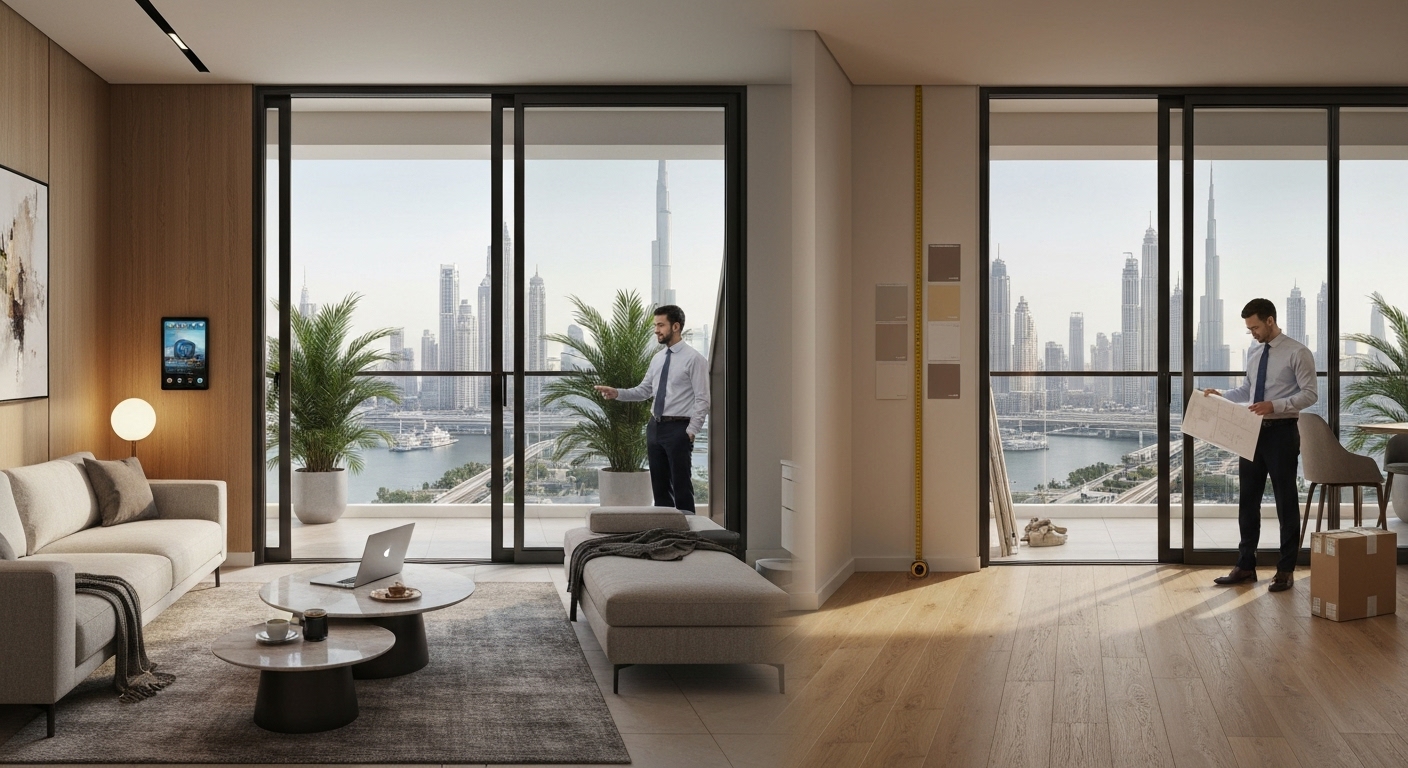Are furnished apartments in Dubai a better investment than unfurnished ones? This is a common question for investors weighing potential returns, target tenants, and exit strategies in the city’s dynamic real estate market. In this article, we’ll provide a clear comparison between furnished and unfurnished apartments in Dubai, highlighting investment costs, yields, and operational considerations so you can make an informed decision.
Understanding the Dubai Rental Market: Furnished vs. Unfurnished
Dubai’s rental market offers a unique landscape where both furnished and unfurnished apartments attract significant tenant demand. In sought-after areas like Dubai Marina, Downtown Dubai, and Business Bay, investors encounter a cosmopolitan tenant mix including expatriates, professionals, and short-term residents. Furnished units are particularly popular among corporate tenants, business travelers, and transient residents seeking convenience and flexibility. These tenants often prioritize fully equipped homes to avoid the hassle and expense of purchasing furniture.
Unfurnished apartments, meanwhile, generally appeal to long-term residents and families who may bring their own furnishings and are looking for a place to turn into a home. The Dubai market has historically favored unfurnished rentals, especially outside of major tourist or business hubs, offering a more stable, lower-turnover tenancy base.
Initial Investment: The Cost of Furnishing an Apartment in Dubai
A core consideration for investors is the upfront capital needed to furnish an apartment. Outfitting a one-bedroom unit in Dubai with quality, modern furnishings can range from AED 25,000 to AED 60,000, depending on the level of finish and amenities. Choosing branded, designer packages—as sometimes offered by developers in prime locations—can push costs even higher.
This upfront expense not only affects cash flow but also ties up capital that could otherwise be used for additional investments or offsetting mortgage payments. It’s important to remember that furnishings will depreciate over time, both in value and aesthetic appeal, requiring periodic upgrades to maintain premium rental pricing and enhance tenant appeal.
Rental Yields and ROI: Do Furnished Apartments Command Higher Returns?
One of the main attractions for furnishing an investment property in Dubai is the potential for higher rental yields. Furnished apartments can command premium rent—typically 10%–30% more than comparable unfurnished units in the same building or neighborhood. In short-term rental markets or prime tourist locations, this premium can be even higher.
However, when calculating true ROI, investors must deduct initial furnishing expenses and account for ongoing costs such as repairs, cleaning, and periodic furniture upgrades. While gross yields may appear strong, net yields can be eroded if occupancy rates fluctuate or if maintenance costs rise. Analytical investors often find that in established residential areas outside Downtown or the Marina, the yield gap narrows and the long-term benefits of unfurnished units—lower turnover and minimal upkeep—can actually deliver superior risk-adjusted returns.
Tenant Demographics and Demand: Who Rents Furnished vs. Unfurnished?
Furnished rentals primarily attract professionals on short-term contracts, tourists, and students. These tenants often expect flexible lease terms and move frequently, leading to potentially higher vacancy periods and increased wear and tear. In popular areas such as Dubai Marina and Jumeirah Lake Towers, furnished apartments see brisk demand during peak business and tourism seasons.
Unfurnished apartments, by contrast, appeal to families and professionals seeking stability and a personal touch that comes with longer-term stays. This reduces vacancy risk and offers more predictable cash flows for landlords.
Example: A One-Bedroom in Business Bay
Consider a one-bedroom apartment in Business Bay. Unfurnished, it may rent for AED 70,000 per year. Furnished, the same unit could generate AED 85,000 annually. After factoring a furnishing package of AED 30,000 and annual refresh costs of AED 3,000, investors should weigh whether the yield premium justifies the extra capital and management effort.
Maintenance, Management, and Wear & Tear: Hidden Costs for Furnished Units
Furnished apartments require greater ongoing attention—appliances may need repair, furniture gets worn, and linens must be periodically replaced. Short-term tenants generate more frequent changeovers, necessitating higher cleaning costs and occasionally leading to greater property wear. Unfurnished units, with longer-term tenants, see fewer turnovers and typically incur lower annual maintenance outlays.
Flexibility and Exit Strategy: Selling a Furnished vs. Unfurnished Property
Exit strategies are vital for investment planning. Unfurnished apartments appeal to a broader range of end users and investors, making them generally easier to sell in Dubai’s liquid property market. Furnished apartments, while attractive to certain buyers, might not justify a significant price premium on resale, and furnishings may quickly become dated.
Making the Smart Investment Choice for Your Dubai Property
When asking whether furnished apartments in Dubai are a better investment than unfurnished, the answer depends on your financial goals, risk appetite, and preferred level of involvement. Furnished units can offer higher gross yields, especially in prime or short-stay-friendly neighborhoods, but require additional capital and management. Unfurnished properties are lower maintenance and may deliver steadier, long-term ROI. To maximize your returns in Dubai’s dynamic real estate market, evaluate your target tenant, desired effort level, and total investment outlay before deciding. For tailored advice and opportunities, contact Danube Properties to learn more.




